




Related bibliographies:
Reptiles
 Snakes Snakes
 Aipysurus Aipysurus
 Emydocephalus Emydocephalus
 Ephalophis Ephalophis
 Hydrelaps Hydrelaps
 Hydrophis Hydrophis
 Laticauda Laticauda
 Microcephalophis Microcephalophis
 Parahydrophis Parahydrophis
Africa
Asia
Australia
Central America
Malay Archipelago
Middle East
North America
South America
Indian Ocean
Pacific Ocean






































































































































































































































































































































| |

Bibliography of the family
Elapidae [part 2: marine species] (Sea Snakes)

(Reptilia: Serpentes)
Note:
In order to limit redundancy, relevant literature indexed in the related bibliographies in the left column may not have been included in this page. For a comprehensive search of literature, these bibliographies should therefore also be consulted.
 |
Anonymous. 1971. Channel for sea snakes. Nature (London) 232: 11-12.
Anonymous. 1973. Seeschlangen im Indo-Pazifik. DATZ (Die Aquarien- und Terrarien-Zeitschrift) 26: 321-323.
Anonymous. 1975. How sea snakes may avoid the bends. Sea Frontiers 21(6): 358.
Anonymous. 1995. The Marine Observer's Log. Sea snake. Marine Observer 65(330): 172.
Ahmed, S. 1978. Sea-snakes of the Indian Ocean in the collections of the Zoological survey of India together with remarks on the geographical distribution of all Indian Ocean species. Journal of the Marine Biological Association of India 17(1) [1975]: 73-81.
Antram, F. 1989. Australian Sea snake utilization - an update. Traffic Bulletin 10(3-4): 31.
Ariff, A.W. 1957. Sea-snake bites. British Medical Journal 5043: 525.
Avolio, C.; Shine, R.; Pile, A. 2006. Sexual dimorphism in scale rugosity in sea snakes (Hydrophiidae). Biological Journal of the Linnean Society 89(2): 343-354.
Bacolod, P.T. 1984. Notes on sea snake fishery on Gato Islet, Cebu Island, Philippines and a proposal for a conservation and management program. Philippine Scientist 21: 155-163.
Bacolod, P.T. 1990. The biology of some commercially important species of sea snakes (Hydrophiidae) in the Visayas Sea. Philippine Scientist 27: 61-88.
Barme, M. 1971. Venomous sea snakes. pp. 285-308. In: B cherl, W. & Buckley, E.E. (eds.): Venomous animals and their venoms. Vol. 2. Venomous vertebrates (snakes, saurians, batrachians, fishes). Academic Press, New York. 687 pp.
Bauer, A.M.; DeVaney, K.D. 1987. Convergence and mimicry in sea snakes and other New Caledonian reef flat organisms. pp. 43-48. In: van Gelder, J.J., Strijbosch, H. & Bergers, P.J.M. (eds.). Proceedings of the 4th Ordinary General Meeting of the Societas Europaea Herpetologica. Societas Europaea Herpetologica, Faculty of Sciences, Nijmegen. 473 pp.
Beirn, J.T. 1979. Sea snakes of Gato Island. An exotic resource of the Philippines. Explorers Journal 57(2): 90-91.
Bergman, A.M. 1943. The breeding habits of sea snakes. Copeia 1943(3): 156-160.
Bergman, R.A.M. 1941. Het vervellen van zeeslangen en van Acrochordus. De Tropische Natuur 30(9): 145-148.
Boulenger, G.A. 1892. Marine Snakes. Nat. Sci. 1: 44-49.
Braestrup, F.W. 1972. Giftige slanger gennem Panama-Kanalen. Naturens Verden 1972(1): 40.
Branch, W.R. 1979. The venomous snakes of southern Africa. Part 2. Elapidae and Hydrophiidae. Snake 11(2): 199-225.
Branch, W.R. 1981. The venomous snakes of southern Africa. 2. Elapidae and Hydrophidae. Bulletin of the Maryland Herpetological Society 17(1): 1-47.
Braun, (-). 1904. ber Seeschlangen. Schr. Ges. Konigsb. 45: Unpaginated.
Brischoux, F.; Kornilev, Y.V. 2014. Hypernatremia in Dice Snakes (Natrix tessellata) from a coastal population: implications for osmoregulation in marine snake prototypes. PLoS ONE 9(3): e92617.
Brischoux, F.; Shine, R. 2011. Morphological adaptations to marine life in snakes. Journal of Morphology 272(5): 566-572.
Brischoux, F.; Tingley, R.; Shine, R.; Lillywhite, H.B. 2012. Salinity influences the distribution of marine snakes: implications for evolutionary transitions to marine life. Ecography 35(11): 994-1003.
Burton, M. (ed.) 1974. Sea Turtles and sea snakes. World Wildlife Yearbook 10(138): 49-60.
Burton, M. (ed.) 1974. Seal turtles and sea snakes. World Wildlife Yearbook 10(139): 61-67.
Byczkowska Smyk, W. 1981. [Sea snakes]. (In Polish). Wszechswiat 1981(4): 95.
Cadle, J.E.; Gorman, G.C. 1981. Albumin immunological evidence and the relationships of sea snakes. Journal of Herpetology 15(3): 329-334.
Caldwell, G.S.; Rubinoff, R.W. 1983. Avoidance of venomous sea snakes by naive herons and egrets. Auk 100(1): 195-198.
Campbell, J.A.; Lamar, W.W. 2004. The venomous reptiles of the Western Hemisphere. Vol. 1-2. Comstock Publishing Associates, Ithaca, N.Y. 870 pp.
Carlberg, T. 2003. D dligt giftig men sn ll. [Deadly poisonous but good-natured.] (In Swedish). Fauna och Flora (Uppsala) 98(1): 43.
Chhapgar, B.F.; Kewalramani, H.G. 1967. Mating and other observations on sea snakes in captivity. Journal of the Bombay Natural History Society 64: 563-564.
Cogger, H.G. 1959. Sea-snakes. Australian Museum Magazine 13: 37-41.
Cooper, M.J. 1964. Ciguatera and other marine poisoning in the Gilbert Islands. Pacific Science 18: 411-440.
Couet, H.G. de 1979. Bio-Serie: Gifttiere. Seeschlangen (Hydrophiidae). Tauchen 2(5): 55-58.
Couet, H.G. de; Punay, E.Y.; Kempfer, A. 1980. Seeschlangen. Elegant, aber gef hrlich. Tauchen 3(6): 55-63.
Cozzi, C.A. 1980. The absence of sea snakes in the Atlantic Ocean. Bulletin of the Maryland Herpetological Society 16(3): 113-118.
Culotta, W.A.; Pickwell, G.V. 1993. The venomous sea snakes: a comprehensive bibliography. Krieger, Malabar, Florida. 504 pp.
Culotta, W.A.; Pickwell, G.V. 1993. The Venomous Sea Snakes: A Comprehensive Bibliography. Krieger, Malabar, Florida. 504 pp.
d'Aulaire, E.; d'Aulaire, P.O. 1980. Meet the sea snake - cautiously. International Wildlife 10(3): 40-47.
Debelius, H. 1996. Seeschlangen. Freund oder Feind? TI-Magazin 130: 41-44.
Dell, Q.; Brewer, D.T.; Griffiths, S.P.; Heales, D.S.; Tonks, M.L. 2009. Bycatch in a tropical schooling - penaeid fishery and comparisons with a related, specialised trawl regime. Fisheries Management and Ecology 16(3): 191-201.
Dudgeon, C.L.; White, W.T. 2012. First record of potential Batesian mimicry in an elasmobranch: juvenile zebra sharks mimic banded sea snakes. Marine and Freshwater Research 63(6): 545-551.
Dunson, W.A. (ed.) 1975. The biology of seasnakes. University Park Press, Baltimore, London & Tokyo. 530 pp.
Dunson, W.A. 1971. The sea snakes are coming. Natural History (New York) 80(9): 52-61.
Dunson, W.A.; Dunson, M.K. 1973. Convergent evolution of sublingual salt glands in the marine file snake and the true sea snakes. Journal of Comparative Physiology 86(3): 193-208.
Dunson, W.A.; Minton, S.A. 1978. Diversity, distribution, and ecology of Philippine marine snakes (Reptilia, Serpentes). Journal of Herpetology 12(3): 281-286.
Dunson, W.A.; Packer, R.K.; Dunson, M.K. 1971. Sea snakes: an unusual salt gland under the tongue. Science (New York) 173: 437-441.
Elfes, C.T.; Livingstone, S.R.; Lane, A.; Lukoschek, V.; Sanders, K.L.; Courtney, A.J.; Gatus, J.L.; Guinea, M.L.; Lobo, A.S.; Milton, D.; Rasmussen, A.R.; Read, M.; White, M.D.; & al. 2013. Fascinating and forgotten: the conservation status of marine elapid snakes. Herpetological Conservation and Biology 8(1): 37-52.
Enderman, H. 1970. A classification of the sea snakes with notes on geographic variation. Unpublished manuscript, Rijksmuseum van Natuurlijke Historie, Leiden.
Fernando, M.; Gooneratne, W. 1983. Sea-snake envenoming. Ceylon Medical Journal 28(3): 131-143.
Fossen, A. 1940. Vergiftiging door den beet van zeeslangen. Geneesk. Tijdschr. Ned. Indie 80: 1164-1166.
Fry, G.C.; Milton, D.A.; Wassenberg, T.J. 2001. The reproductive biology and diet of sea snake bycatch of prawn trawling in northern Australia: characteristics important for assessing the impacts on populations. Pacific Conservation Biology 7(1): 55-73.
Gahrn, K. 1989. P sporet af de gte s slanger [In search for the real sea serpents]. (In Danish). Illustreret Videnskab 1989(7): 66.
Gahrn, K.; Vennize, I.M. 1989. S slanger dr ber 200 mennesker om ret [Sea snakes kill 200 people each year]. (In Danish). Illustreret Videnskab 1989(7): 38-39, 80.
Gail, R.; Rageau, J. 1958. Introduction a l' tude des serpents marins (Ophidiens, Hydrophiidae) en Nouvelle-Caledonie. Bull. Soc. Path. exot. 51: 448-459.
Gillett, A.K.; Flint, M.; Mills, P.C. 2014. An antemortem guide for the assessment of stranded Australian sea snakes (Hydrophiinae). Journal of Zoo and Wildlife Medicine 45(4): 755-765.
Glodek, G.S.; Voris, H.K. 1982. Marine snake diets: prey composition diversity and overlap. Copeia 1982(3): 661-666.
Goiran, C.; Shine, R. 2015. Parental defence on the reef: antipredator tactics of coral-reef fishes against egg-eating seasnakes. Biological Journal of the Linnean Society 114(2): 415-425.
Golay, P. 1985. Checklist and keys to the terrestrial proteroglyphs of the world (Serpentes: Elapidae-Hydrophiidae). Elapsoidea, Geneva: I-Ix, 1-91.
Golay, P.; Smith, H.M.; Broadley, D.G.; Dixon, J.R.; McCarthy, C.; Rage, J.C.; Sch tti, B.; Toriba, M. 1993. Endoglyphs and other major venomous snakes of the world: a checklist. Azemiops, Geneva, Switzerland. 478 pp.
Gray, M.E. 1930. Note on sea snakes. Austral. Nat. Sydney 8(4): 88.
Guinea, M.L.; Whiting, S.D. 2005. Insights into the distribution and abundance of sea snakes at Ashmore Reef. Beagle 2005 (February): 199-205. Supplement 1.
Halstead, B.W. 1959. Dangerous marine animals. Cornell Maritime Press, Cambridge, Maryland. 146 pp.
Halstead, B.W. 1970. Poisonous and venomous marine animals of the world. Vol. 3. Vertebrates continued. United States Government Printing Office, Washington, D.C. 1006 pp.
Harding, K.A.; Welch, K.R.G. 1980. Venomous snakes of the world. A checklist. Pergamon, New York. 188 pp.
Heales, D.S.; Gregor, R.; Wakeford, J.; Wang, Y.; Yarrow, J.; Milton, D.A. 2008. Tropical prawn trawl bycatch of fish and seasnakes reduced by Yarrow Fisheye Bycatch Reduction Device. Fisheries Research (Amsterdam) 89(1): 76-83.
Heatwole, H. 1975. Voluntary submergence times of marine snakes. Marine Biol. Berlin 32(2): 205-213.
Heatwole, H. 1977. Ecological studies on marine snakes. Marine Res. Indonesia 19: 147.
Heatwole, H. 1977. Heart rate during breathing and apnea in marine snakes (Reptilia, Serpentes). Journal of Herpetology 11(1): 67-76.
Heatwole, H. 1978. Adaptations of marine snakes. American Scientist 66(5): 594-604.
Heatwole, H. 1981. Temperature relations of some sea snakes. The Snake 13(1): 53-57.
Heatwole, H. 1987. Sea snakes. Australian Studies in Biological Sciences Series 2: 1-85.
Heatwole, H. 1997. Marine snakes: are they a sustainable resource? Wildlife Society Bulletin 25(4): 766-772.
Heatwole, H. 1999. Sea snakes. 2nd ed. Krieger, Malabar, Florida. 148 pp.
Heatwole, H.; Cogger, H.G. 1993. Family Hydrophiidae. pp. 310-318. In: Glasby, C.J.; Ross, G.J.B. & Beesley, P.L. (eds.). Fauna of Australia. Vol. 2A. Amphibia & Reptilia. Australian Government Publishing Service, Canberra. 439 pp.
Heatwole, H.; Cogger, H.G. 1994. Sea snakes of Australia. pp. 167-205. In: Gopalakrishnakone, P. (ed.). Venom and Toxin Research Group, National University of Singapore, Singapore University Press.
Heatwole, H.; Finnie, E.P. 1980. Seal predation on a sea snake. Herpetofauna (Sydney) 8(2): 24.
Heatwole, H.; Grech, A.; Monahan, J.F.; King, S.; Marsh, H. 2012. Thermal biology of sea snakes and sea kraits. Integrative and Comparative Biology 52(2): 257-273.
Heatwole, H.; Guinea, M.L. 1993. Family Laticaudidae. pp. 319-321. In: Glasby, C.J.; Ross, G.J.B. & Beesley, P.L. (eds.). Fauna of Australia. Vol. 2A. Amphibia & Reptilia. Australian Government Publishing Service, Canberra. 439 pp.
Heatwole, H.; Heatwole, E.; Johnson, C.R. 1974. Shark predation on sea snakes. Copeia 1974(3): 780-781.
Heatwole, H.; Minton, S.A.; Taylor, R.; Taylor, V. 1978. Underwater observations on sea snake behaviour. Records of the Australian Museum 31(18): 737-761.
Heatwole, H.; Poran, N.S. 1995. Resistances of sympatric and allopatric eels to sea snake venoms. Copeia 1995(1): 136-147.
Heatwole, H.; Seymour, R. 1976. Respiration of marine snakes. In: Respiration Of Amphibious Vertebrates. Academic Press, London. 402 pp.
Hediger, H. 1977. Seeschlangen. Aquarien Magazin 11(11): 462-466.
Heithaus, M.R.; Wirsing, A.J.; Dill, L.M. 2012. The ecological importance of intact top-predator populations: a synthesis of 15 years of research in a seagrass ecosystem. Marine and Freshwater Research 63(11): 1039-1050.
Herre, A.W.C.T. 1942. Notes on Philippine sea-snakes. Copeia 1942(1): 7-9.
Hoser, R.T. 2013. Making sense of the mess... a new and workable sea-snake taxonomy with nomenclature to match. Australasian Journal of Herpetology 16: 15-18.
Ineich, I. 2004. Les Serpents Marins. Institut Oceanographique, Paris. 320 pp.
Jacobs, M. 1984. Sea snake research sheds light on diving biology of marine reptiles. Smithsonian Institution Research Reports 45: 5.
Jaroniewski, W. 1975. [Sea snakes]. (In Polish). Wszechswiat 1975(2): 38-41.
Jeffries, W.B.; Voris, H.K. 1976. The identification of pedunculate barnacles found on Malaysian sea snakes with notes on their mode and site of attachment. (Abstract). Herpetological Review 7(2): 87.
Jeffries, W.B.; Voris, H.K. 1979. Observations on the relationship between Octolasmis grayii (Darwin, 1851) (Cirripedia, Thoracica) and certain marine snakes (Hydrophiidae). Crustaceana (Leiden) 37(2): 123-132.
Jones, R.S. 1969. Poisonous and venomous marine animals of the world. Vol. 2. Vertebrates. Copeia 1969: 412-415.
Kaiser, R. 2014. [Husbandry experiences with various sea snakes in the Berlin Zoo Aquarium]. (In German). Bongo 45: 51-58.
Kalaiarasan, V.; Kanakasabai, R. 1994. Seasonal availability of sea snakes (family: Hydrophidae) in the Madras waters. Cobra (Madras) 16: 18-19.
Keogh, J.S.; Shine, R.; Donnellan, S. 1998. Phylogenetic relationships of terrestrial Australo-Papuan elapid snakes (subfamily Hydrophiinae) based on cytochrome b and 16S rRNA sequences. Molecular Phylogenetics and Evolution 10(1): 67-81.
Key, M.M.; Jeffries, W.B.; Voris, H.K. 1995. Epizoic bryozoans, sea snakes, and other nektonic substrates. Bulletin of Marine Science 56(2): 462-474.
Kharin, V.E. 1981. Marine snakes of the subfamily Laticaudinae Cope 1879, sensu lato. pp. 139-140. In: Darevsky, I.S., Ananjeva, N.B., Barkagan, Z.S., Borkin, L.Y., Sokolova, T.M. & Shcherbak, N.N. (eds.). The problems of herpetology: abstracts. Nauka, Leningrad. 163 pp.
Kharin, V.E. 1984. Revision of sea snakes of subfamily Laticaudinae Cope, 1879 sensu lato (Serpentes, Hydrophiidae). Trudy Zoologicheskogo Instituta Akademii Nauk SSSR 124: 128-139.
Kharin, V.E. 2008. A redescription of the domestic find of the big Sea Krait Pseudolaticauda semifasciata (Reinwardt in Schlegel, 1837), with a note on the species composition of sea snakes (Serpentes: Laticaudidae, Hydrophiidae) in Russian and adjacent waters. Biologiya Morya (Vladivostok) 34(2): 90-95. (English translation: Russian Journal of Marine Biology)
Kharin, V.E.; Czeblukov, V.P. 2009. A revision of the sea snakes of subfamily Hydrophiinae. 1. Tribe Disteirini nov. (Serpentes: Hydrophiidae). Russian Journal of Herpetology 16(3): 183-202.
Kharin, V.E.; Hallermann, J. 2009. Annotated catalogue of Sea Kraits (Laticaudidae) and sea snakes (Hydrophiidae) of the herpetological collection of the Zoological Museum, University of Hamburg. Mitteilungen aus dem Hamburgischen Zoologischen Museum und Institut 106: 51-67.
Klemmer, K. 1962. Seeschlangen und ihre Haltung im Aquarium. Natur und Museum 92: 99-105.
Klemmer, K. 1963. Liste der rezenten Giftschlangen. Elapidae, Hydrophiidae, Viperidae und Crotalidae. pp. 253-464. In: Anonymous. Die Giftschlangen der Erde. Behringwerk-Mitteilungen, Sonderband, Marburg/Lahn.
Klemmer, K. 1966. Observations on the biology of sea snakes - Hydrophidae - with remarks on their systematics. Memorias do Instituto Butantan (Sao Paulo) 33: 101-103.
Lane, A.; Shine, R. 2011. Phylogenetic relationships within laticaudine sea snakes (Elapidae). Molecular Phylogenetics and Evolution 59(3): 567-577.
Lemen, C.A.; Voris, H.K. 1981. A comparison of reproductive strategies among marine snakes. Journal of Animal Ecology 50(1): 89-101.
Lillywhite, H.B.; Brischoux, F. (eds.). 2012. New frontiers from marine snakes to marine ecosystems, presented at the annual meeting of the Society for Integrative and Comparative Biology, January 3-7, 2012 at Charleston, South Carolina. Integrative and Comparative Biology 52(2): 213-330.
Lim, B.L.; Sawai, Y. 1975. Ecology and distribution of some seasnakes in Malay Peninsula. The Snake 7(1): 28-32.
Limpus, C.J. 1987. Sea snakes. pp. 194-203. In: Covacevich, J., Davie, P. & Pearn, J. (eds.). Toxic plants & animals. A guide for Australia. Queensland Museum, Brisbane. 501 pp.
Limpus, C.J. 1988. Northern sea snakes and their kin. pp. 49-54. In: Pearn, J. & Covacevich, J. (eds.). Venoms & victims. Queensland Museum, South Brisbane. 135 pp.
Liu, L. 1989. The biology of sea snakes. pp. 401-404. In: Matsui, M., Hikida, T. & Goris, R.C. (eds.). Current herpetology in East Asia. Proceedings of the second Japan-China Herpetological Symposium, Kyoto, July 1988. Herpetological Society of Japan, Kyoto. 521 pp.
Liu, Y.L.; Lillywhite, H.B.; Tu, M.C. 2010. Sea snakes anticipate tropical cyclone. Marine Biology (Berlin) 157(11): 2369-2373.
Low, M.R. 2012. Sea snakes... drink sea water, no. Malaysian Naturalist 66(2): 14-17.
Lukoschek, V. 2013. Sea snake disappearances from a biodiversity hotspot. Herpetological Review 44(4): 553.
Lukoschek, V.; Avise, J.C. 2011. Genetic monandry in 6 viviparous species of true sea snakes. Journal of Heredity 102(3): 347-351.
Lukoschek, V.; Beger, M.; Ceccarelli, D.; Richards, Z.; Morgan, P. 2013. Enigmatic declines of Australia's sea snakes from a biodiversity hotspot. Biological Conservation 166: 191-202.
Lukoschek, V.; Keogh, J.S. 2006. Molecular phylogeny of sea snakes reveals a rapidly diverged adaptive radiation. Biological Journal of the Linnean Society 89(3): 523-539.
Mao, S.H.; Chen, B.Y.; Chang, H.M. 1977. The evolutionary relationships of sea snakes suggested by immunological cross-reactivity of transferrins. Comparative Biochemistry and Physiology (A) 57(A): 403-406.
Masunaga, G.; Kosuge, T.; Asai, N.; Ota, H. 2007. Shark predation of sea snakes (Reptilia: Elapidae) in the shallow waters around the Yaeyama Islands of the southern Ryukyus, Japan. JMBA2 Biodiversity Records 5970: 1-4.
McCarthy, C.J. 1987. Sea snake puzzles. pp. 279-284. In: van Gelder, J.J., Strijbosch, H. & Bergers, P.J.M. (eds.). Proceedings of the 4th Ordinary General Meeting of the Societas Europaea Herpetologica. Societas Europaea Herpetologica, Faculty of Sciences, Nijmegen. 473 pp.
McDowell, S.B. 1969. Notes on the Australian sea-snake Ephalophis greyi M. Smith (Serpentes: Elapidae, Hydrophiinae) and the origin and classification of sea snakes. Journal of the Linnean Society (Zoology) 48: 333-349.
McDowell, S.B. 1972. The genera of seasnakes of the Hydrophis group (Serpentes: Elapidae). Transactions of the Zoological Society of London 32(3): 189-247.
McLain, J.M. 1984. Venomous snakes of the world - family Hydrophiidae. Freshwater and Marine Aquarium 7(9): 73-75.
Meer Mohr, J.C. van der 1927. Notiz ber Seeschlangen. Misc. Zool. Sumatrana 23: 1-2.
Meier, J.; Stocker, K.F. 1995. Biology and distribution of venomous snakes of medical importance and the composition of snake venoms. pp. 367-412. In: Meier, J. & White, J. (eds.). Handbook of clinical toxicology of animal venoms and poisons. CRC Press, Boca Raton, New York, etc. 752 pp.
Mertens, R. 1934. ber die Verbreitung und das Verbreitungszentrum der Seeschangen. (Hydrophidae). Zoogeographica (Jena) 2: 305-319.
Milton, D.A. 2001. Assessing the susceptibility to fishing of populations of rare trawl bycatch: sea snakes caught by Australia's northern prawn fishery. Biological Conservation 101(3): 281-290.
Milton, D.A.; Fry, G.C.; Dell, Q. 2009. Reducing impacts of trawling on protected sea snakes: by-catch reduction devices improve escapement and survival. Marine and Freshwater Research 60(8): 824-832.
Minton, S.A. 1978. Serological relationships among some Midwestern snakes. Proceedings of the Indiana Academy of Science 87: 438-445.
Minton, S.A. 1978. Serological relationships of some Philippine sea snakes. Copeia 1978(1): 151-154.
Minton, S.A.; Heatwole, H. 1978. Snakes and the sea. Oceans 11(2): 53-56.
Moore, A.; Montoya, A.; Rasmussen, A.R.; Broad, K.; Voris, H.K.; Takacs, Z. 2014. Sea snake harvest in the Gulf of Thailand. Conservation Biology 28(6): 1677-1687.
Murphy, J.B. 2014. Studies on venomous reptiles in zoos and aquariums. Part I. Introduction, rear-fanged colubrid snakes, elapids, sea kraits and seasnakes. Herpetological Review 45(1): 158-178.
Murthy, T.S.N. 1992. Marine reptiles of India: an overview. pp. 35-38. In: Strimple, P.D. & Strimple, J.L. (eds.). Contributions in herpetology. Greater Cincinnati Herpetological Society, Cincinnati. 111 pp.
Myers, G.S. 1947. Murray's Reptiles of Sind, with a note on three forgotten descriptions of Indian sea snakes, published therein. Herpetologica 3(5): 167-168.
Okonogi, T.; Hattori, Z.; Fukami, M.; Inoue, T.; Sato, M.; Ajiiki, Y.; Kogure, Y. 1980. A miscellany report of sea snakes. The Snake 12(1-2): 19-24.
Paulson, D.R. 1967. Searching for sea serpents. Sea Frontiers 13: 244-250.
Pennisi, E. 2012. Physiological ecology salt and the sea serpent. Science (Washington, D.C.) 338(6111): 1143.
Pickwell, G.V. 1972. The venomous sea snakes. Fauna (Rancho Mirage) 4: 17-32.
Pinner, E. 1974. Seeschlangen im Pazifischen Ozean. Naturwissenschaftliche Rundschau 27(1): 31.
Polidoro, B.A.; Elfes, C.T.; Sanciangco, J.C.; Pippard, H.; Carpenter, K.E. 2011. Conservation status of marine biodiversity in Oceania: an analysis of marine species on the IUCN Red List of threatened species. Journal of Marine Biology 2011 (Article 247030): 1-14.
Poyntz, A.R. 1927. The pairing of sea snakes. Journal of the Bombay Natural History Society 31: 1038-1039.
Priede, M. 1990. The sea snakes are coming. New Scientist 128(1742): 29-33.
Proches, S. 2001. Back to the sea: secondary marine organisms from a biogeographical perspective. Biological Journal of the Linnean Society 74(2): 197-203.
Rasmussen, A.R. 1997. Systematics of sea snakes: a critical review. Symposia of the Zoological Society of London 70 [1996]: 15-30.
Rasmussen, A.R. 2002. Phylogenetic analysis of the "true" aquatic elapid snakes Hydrophiinae (sensu Smith et al., 1977) indicates two independent radiations into water. Steenstrupia 27(1): 47-63.
Rasmussen, A.R.; Ineich, I. 2000. Sea snakes of New Caledonia and surrounding waters (Serpentes: Elapidae): first report on the occurrence of Lapemis curtus and description of a new species from the genus Hydrophis. Hamadryad 25(2): 91-99.
Rasmussen, A.R.; Murphy, J.C.; Ompi, M.; Whitfield-Gibbons, J.; Uetz, P. 2011. Marine reptiles. PLoS ONE 6(11): e27373, 1-12.
Rasmussen, A.R.; Sanders, K.L.; Guinea, M.L.; Amey, A.P. 2014. Sea snakes in Australian waters (Serpentes: subfamilies Hydrophiinae and Laticaudinae) - a review with an updated identification key. Zootaxa 3869(4): 351 371.
Reid, H.A. 1956. Sea snakes in captivity. Proceedings of the Zoological Society of London 127: 581.
Reid, H.A. 1956. Seasnake bite research. Transactions of the Royal Society of Tropical Medicine and Hygiene 50(6): 517-542.
Reid, H.A. 1956. Seasnake bites. British Medical Journal 4984: 73-78.
Reid, H.A. 1956. Three fatal cases of sea-snake bite. pp. 367-371. Amer. Assoc. Adv. Sci., Washington, D.C.
Reid, H.A. 1959. Sea-snake bite and poisoning. Practitioner 183: 530-534.
Reid, H.A.; Lim, K.J. 1957. Sea-snake bite. A survey of fishing villages in North-West Malaya. British Medical Journal 5056: 1266-1272.
Rodiger, A. 1986. Schlangen mit Heckantrieb. Kosmos (Stuttgart) 82(7): 38-43.
Rubinoff, I. 1970. Differential reactions of Atlantic and Pacific predators to sea snakes. Nature (London) 228: 1288-1290.
Sanders, K.L.; Lee, M.S.Y.; Leys, R.; Foster, R.; Keogh, J.S. 2008. Molecular phylogeny and divergence dates for Australasian elapids and sea snakes (Hydrophiinae): evidence from seven genes for rapid evolutionary radiations. Journal of Evolutionary Biology 21(3): 682-695.
Sanders, K.L.; Lee, M.S.Y.; Mumpuni, M.S.Y.; Bertozzi, T.; Rasmussen, A.R. 2013. Multilocus phylogeny and recent rapid radiation of the viviparous sea snakes (Elapidae: Hydrophiinae). Molecular Phylogenetics and Evolution 66(3): 575-591.
Sanders, K.L.; Mumpuni; Lee, M.S.Y. 2010. Uncoupling ecological innovation and speciation in sea snakes (Elapidae, Hydrophiinae, Hydrophiini). Journal of Evolutionary Biology 23(12): 2685-2693.
Sanders, K.L.; Rasmussen, A.R.; Elmberg, J. 2012. Independent innovation in the evolution of paddle-shaped tails in viviparous sea snakes (Elapidae: Hydrophiinae). Integrative and Comparative Biology 52(2): 311-320.
Sanders, K.L.; Rasmussen, A.R.; Mumpuni; Elmberg, J.; Silva, A. de; Guinea, M.L.; Lee, M.S.Y. 2013. Recent rapid speciation and ecomorph divergence in Indo-Australian sea snakes. Molecular Ecology 22(10): 2742-2759.
Sawai, Y.; Mishima, S.; Tseng, C.S.; Toriba, M.; Lim, B.L.; Ramachandran, C.P.; Devaraj, T.; Phong-Aksara, S.; Romer, J.D. 1978. Study on seasnakes and the bites in Malaysia, Thailand and Hong Kong. Snake 9(2): 48-62.
Scanlon, J.D.; Lee, M.S.Y. 2004. Phylogeny of Australasian venomous snakes (Colubroidea, Elapidae, Hydrophiinae) based on phenotypic and molecular evidence. Zoologica Scripta 33(4): 335-366.
Schall, J.J. 1969. Sea snakes - mysterious mariners. Frontiers 33(3): 12-14.
Schnee, T. 1898. Einiges ber Seeschlangen. Zoologischer Garten 39: 90-96.
Scholey, K. 1985. Sea serpents. BBC (British Broadcasting Corporation) Wildlife 3(10): 462-466.
Schweisheimer, W. 1976. bersiedlung pazifischer Seeschlangen in den Atlantik. Naturwissenschaftliche Rundschau 29(12): 434-435.
Seymour, R.S. 1974. How sea snakes may avoid the bends. Nature (London) 250(5466): 489-490.
Shaw, C.E. 1961. Snakes of the sea. Zoonooz 34(7): 3-5.
Shine, R.; Cogger, H.G.; Reed, R.R.; Shetty, S.; Bonnet, X. 2003. Aquatic and terrestrial locomotor speeds of amphibious sea-snakes (Serpentes, Laticaudidae). Journal of Zoology (London) 259(3): 261-268.
Shine, R.; Reed, R.N.; Shetty, S.; Cogger, H.G. 2002. Relationships between sexual dimorphism and niche partitioning within a clade of sea-snakes (Laticaudinae). Oecologia (Berlin) 133(1): 45-53.
Shuntov, V.P. 1963. Sea-snakes. Priroda (Moscow) 3: 103-104.
Shuntov, V.P. 1966. On the distribution of sea snakes in the South-Chinese Sea and East Indian Ocean. Zoologicheskii Zhurnal 45: 1882-1886.
Shuntov, V.P. 1971. Sea snakes (Serpentes, Hydrophidae) of the North Australian Shelf. Ekologiya 1971(4): 65-72.
Slowinski, J.B. 1989. The interrelationships of laticaudine sea snakes based on the amino acid sequences of short-chain neurotoxins. Copeia 1989(3): 783-788.
Smedley, N. 1931. Ovoviviparity in sea-snakes. Nature (London) 127(3192): 13.
Smith, F.G.W. 1957. Sea snakes are real. Sea Frontiers 3: 87-93.
Smith, J.L.B. 1958. The deadly sea-snakes. Veld & Vlei 3(10): 20-21, 26.
Smith, M.A. 1920. On sea snakes from the coasts of the Malay Peninsula, Siam and Cochin-China. Journal Fed. Malay States Mus. Kuala Lumpur 10(1): 1-63.
Smith, M.A. 1926. Monograph of the sea snakes. British Museum of Natural History, London. 130 pp.
Smith, M.A. 1930. Ovoviviparity in sea snakes. Nature 126(3180): 568.
Smith, M.A. 1935. The sea snakes (Hydrophiidae). Dana Report 8: 1-6.
Strickland, J.L.; Carter, S.; Kraus, F.; Parkinson, C.L. 2016. Snake evolution in Melanesia: origin of the Hydrophiinae (Serpentes, Elapidae), and the evolutionary history of the enigmatic New Guinean elapid Toxicocalamus. Zoological Journal of the Linnean Society 178: 663 678.
Tamiya, N.; Puffer, H. 1974. Lethality of sea snake venoms. Toxicon 12(1): 85-87.
Toriba, M. 1984. Notes on sea snakes: a correction. The Snake 16(1): 75-76.
Tu, A.T. 1974. Distribution of sea snakes in southeast Asia and the Far East and chemistry of venoms of three species. Marine Sci. 1: 207-230.
Tu, A.T. 2011. Sea Snakes and their Venoms. Alaken, Inc., Fort Collins, Colorado. 190 pp.
Tu, A.T.; Stringer, J.M. 1973. Three species of sea snakes not previously reported in the Strait of Formosa. Journal of Herpetology 7(4): 384-386.
Tu, A.T.; Tu, T. 1970. Sea snakes from Southeast Asia and Far East and their venoms. pp. 885-903. In: Poisonous and venomous marine animals of the world. Vol. 3. Vertebrates continued. United States Government Printing Office, Washington D.C. 1006 pp.
Udyawer, V.; Read, M.; Hamann, M.; Heupel, M.R.; Simpfendorfer, C.A. 2016. Importance of shallow tidal habitats as refugia from trawl fishing for sea snakes. Journal of Herpetology 50(4): 527 533.
Ukuwela, K.D.B.; Lee, M.S.Y.; Rasmussen, A.R.; Silva, A. de; Mumpuni; Fry, B.G.; Ghezellou, P.; Rezaie-Atagholipour, M.; Sanders, K.L. 2016. Evaluating the drivers of Indo-Pacific biodiversity: speciation and dispersal of Sea Snakes (Elapidae: Hydrophiinae). Journal of Biogeography 43(2): 243-255.
Vols e, H. 1939. The sea snakes of the Iranian Gulf and the Gulf of Oman. Danish Scientific Investigation in Iran 1: 9-45.
Vols e, H. 1956. Sea snakes. pp. 87-95. Galathea Deep Sea Exped., London.
Voris, H.; Voris, H.; Jeffries, W.B. 1983. Sea snakes: mark-release-recapture. Field Museum of Natural History Bulletin 54(10): 5-10.
Voris, H.; Voris, H.; Jeffries, W.B. 1984. Sea snakes: mark-release-recapture. Malayan Naturalist 38(1): 24-27.
Voris, H.K. 1971. New approaches to character analysis applied to the sea snakes (Hydrophiidae). Systematic Zoology 20: 442-458.
Voris, H.K. 1975. Dermal scale-vertebra relationships in sea snakes (Hydrophiidae). Copeia 1975(4): 746-757.
Voris, H.K. 1977. A phylogeny of the sea snakes (Hydrophiidae). Fieldiana Zoology 70(4): 79-169.
Voris, H.K.; Jeffries, W.B. 1995. Predation on marine snakes: a case for decapods supported by new observations from Thailand. Journal of Tropical Ecology 11(4): 569-576.
Voris, H.K.; Voris, H.H. 1983. Feeding strategies in marine snakes: an analysis of evolutionary, morphological, behavioural and ecological relationships. American Zoologist 23(2): 411-425.
Wall, F. 1907. On the Hydrophidae in the Colombo Museum. Spolia Zeylanica 4(16): 166-172.
Wall, F. 2013. A Monograph of the Sea Snakes. Rev. ed. (First published in 1909). Nature Books India, Kolkata. 114 pp.
Ward, T.M. 1996. Sea snake by-catch of fish trawlers on the northern Australian continental shelf. Marine and Freshwater Research 47(4): 625-630.
Ward, T.M. 1996. Sea snake by-catch of prawn trawlers on the northern Australian continental shelf. Marine and Freshwater Research 47(4): 631-635.
Wassenberg, T.J.; Milton, D.A.; Burridge, C.Y. 2001. Survival rates of sea snakes caught by demersal trawlers in northern and eastern Australia. Biological Conservation 100(3): 271-280.
Wassenberg, T.J.; Salini, J.P.; Heatwole, H.; Kerr, J.D. 1994. Incidental capture of sea-snakes (Hydrophiidae) by prawn trawlers in the Gulf of Carpentaria, Australia. Australian Journal of Marine and Freshwater Research 45(3): 429-443.
Watt, G.; Theakston, R.D.G. 1985. Seasnake bites in a freshwater lake. American Journal of Tropical Medicine and Hygiene 34(4): 770-773.
West, J. 1990. The biology of captive sea snakes. Herpetofauna (Sydney) 20(2): 28-31.
White, J. 1995. Clinical toxicology of sea snakebites. pp. 159-170. In: Meier, J. & White, J. (eds.). Handbook of clinical toxicology of animal venoms and poisons. CRC Press, Boca Raton, New York, etc. 752 pp.
Wilkey, R. 2002. A checklist for African snakes. Vol. II: the family Elapidae (cobras, mambas and allied species) & the family Hydrophiidae (sea snakes). Richard Terrell Society, London. 78 pp.
Williamson, J.A.; Fenner, P.J.; Burnett, J.W.; Rifkin, J.F. (eds.) 1996. Venomous and poisonous marine animals: a medical and biological handbook. University of New South Wales Press, Sydney. 504 pp.
Wirsing, A.J.; Heithaus, M.R.; Dill, L.M. 2007. Can measures of prey availability improve our ability to predict the abundance of large marine predators? Oecologia (Berlin) 153(3): 563-568.
Wittmer, D. 1977. Sea snakes. Herp 13(1): 42-43.
Wolff, T. 1982. Havslanger i ferskvand. [Sea snakes in fresh water]. Nordisk Herpetologisk Forening 25(10): 246-251.
W ster, W.; Golay, P.; Warrell, D.A. 1997. Synopsis of recent developments in venomous snake systematics. Toxicon 35(3): 319-340.
W ster, W.; Golay, P.; Warrell, D.A. 1998. Synopsis of recent developments in venomous snake systematics, no. 2. Toxicon 36(2): 299-307.
Zimmerman, K.D. 1988. The question of sea snake aggression. Herpetofauna (Sydney) 18(2): 11-12.
Zimmerman, K.D.; Heatwole, H.; Menez, A. 1994. Sea snakes in the Coral Sea: an expedition for the collection of animals and venom. Herpetofauna (Sydney) 24(1): 25-29.
|
| | 


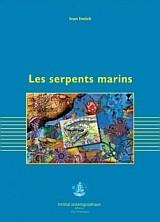

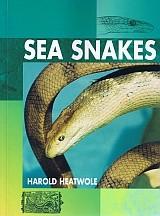



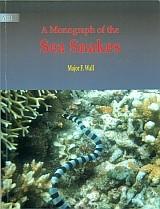

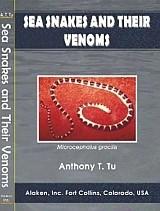

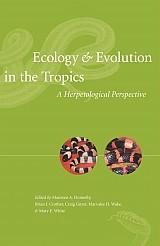

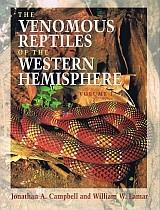

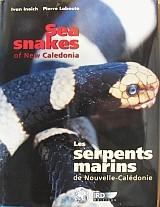

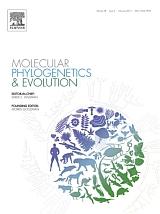

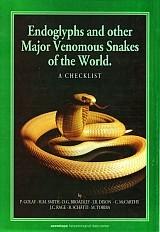

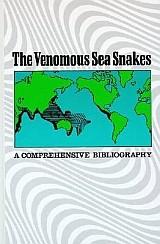

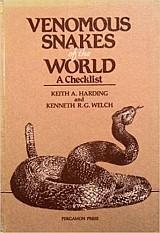

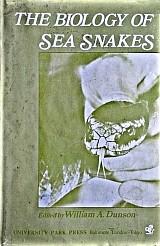











































































































































































|

